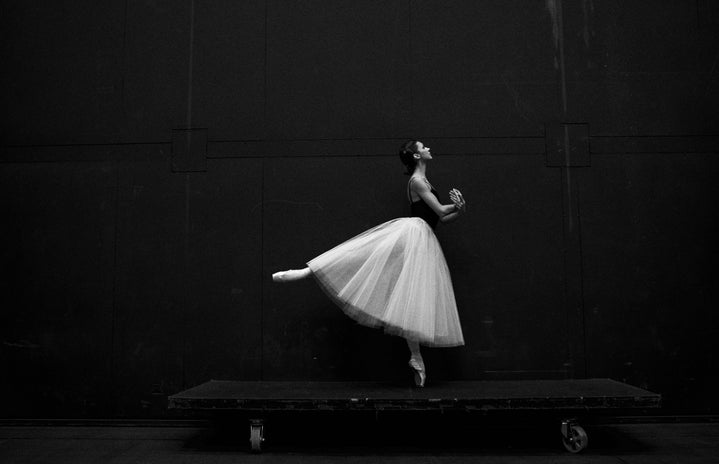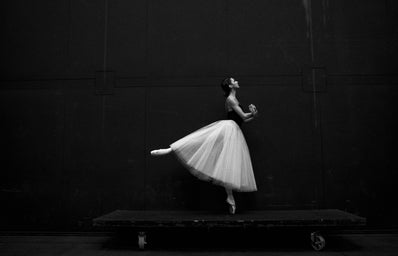This is a sponsored feature. All opinions are 100% from Her Campus.
On Sept. 19, the Boston Ballet opened their 56th season with their rendition of “Giselle.” Despite a slow start and some opening night jitters — namely, a rogue Irish Wolfhound that left the audience more endeared than unimpressed — the production swelled into a gripping story of love, heartbreak, and forgiveness.
Set during the grape harvest in a small town on the Rhine, the ballet opens with Duke Albrecht, who has fallen in love with the young Giselle, a peasant girl fond of dancing despite her weak heart. Though Albrecht is betrothed to another, he disguises himself as a villager named “Loys” to court Giselle, who is shy and initially resistant to his charms.
Those closest to Giselle warn her against falling in love with the stranger. Hilarion, a gamekeeper of the land, is also in love with Giselle and becomes suspicious of “Loys.” Bethe, Giselle’s mother, worries over her daughter’s health and is disapproving of the pair, believing that Hilarion would be a better match for Giselle.
The ballet continues in what is simultaneously the longest and most uneventful sequence of the show, where a group of noblemen arrive at the village, commencing a celebration of the harvest. The villagers entertain the noblemen by dancing for them, including the stand-out performance of the night — the peasant pas de deux performed by Ji Young Chae and Tigran Mkrtchyan. During the festivities, Giselle is named Harvest Queen and is gifted a necklace from Albrecht’s betrothed, Bathilde.
The villagers continue the festivities, undeterred by the noblemen moving on to wherever noble-people go after having their fill and being entertained by peasants. Hilarion disrupts the ceremony and reveals Albrecht’s true identity by finding the nobleman’s (very poorly hidden) sword and cloak. He calls back the party of noblemen, who at this point must have been utterly exhausted by their back and forth journey, and forces the panicked Albrecht to fess up to his lies by greeting Bathilde.
Shocked at his deception, Giselle becomes inconsolable and is struck by a fit of grief, causing her to dance until her heart gives out and she dies.
At the start of the second act, Hilarion is mourning at Giselle’s grave when he is frightened away by the Wilis, the spirits of women betrayed by their lovers. Led by their queen Myrtha, the Wilis exact revenge on men they encounter in the woods by making them dance to their deaths.
It is in this second act that the dancing truly begins. Shrouded in blue light and white tulle against a background of swaying gnarled trees, Myrtha and the Wilis summon Giselle from her grave in a chilling dance sequence.
While Albrecht and Giselle reconcile at her grave, the Wilis use their magic to torture Hilarion, forcing him to dance until he collapses before turning their attention to Albrecht. Giselle pleads for Myrtha’s mercy, a move that surely Hilarion deserved more than Albrecht, the man whose betrayal caused her death. Either way, Myrtha refuses her request and Albrecht is forced to dance until comes close to death.
To save him, Giselle dances with Albrecht, her love keeping him alive until sunrise when the Wilis lose their power. After sharing a farewell with Albrecht, Giselle’s spirit is freed from the vengeful Wilis and she returns to her grave in peace.
Viktorina Kapitonova, as Giselle, led a performance that uplifted the production from a tale about a frustratingly naive girl in love to one about the freedom in forgiveness.
We can only hope that Albrecht didn’t use his second chance at life to harass some other poor girl that had no interest in him.



